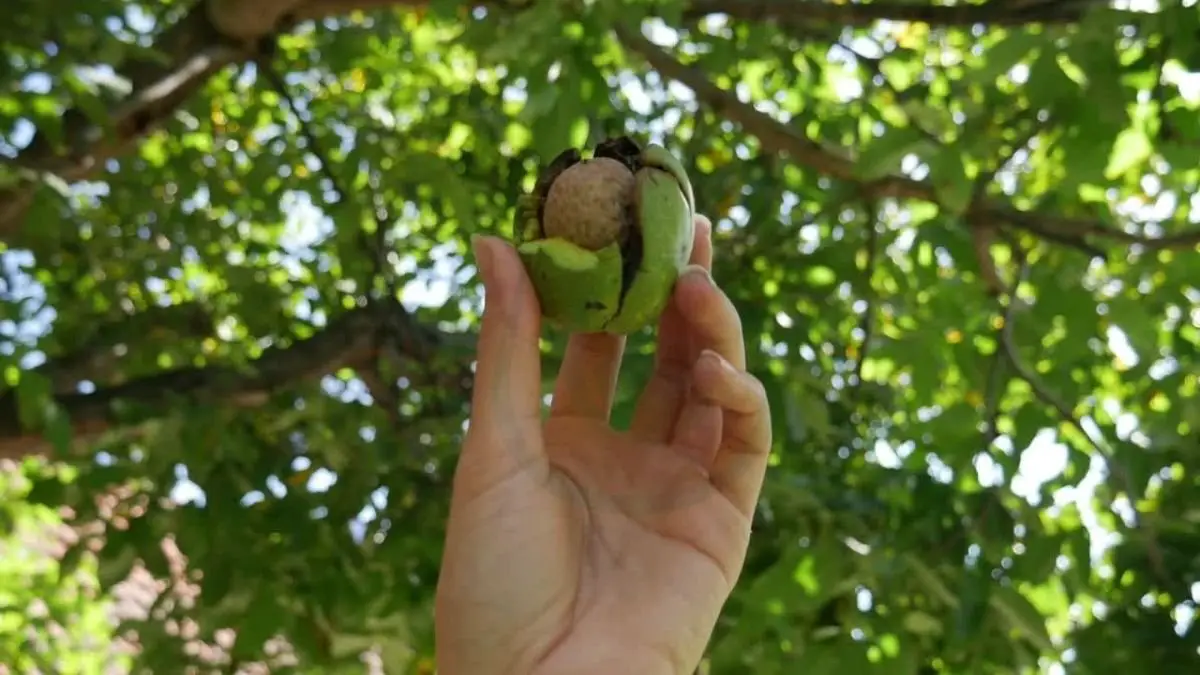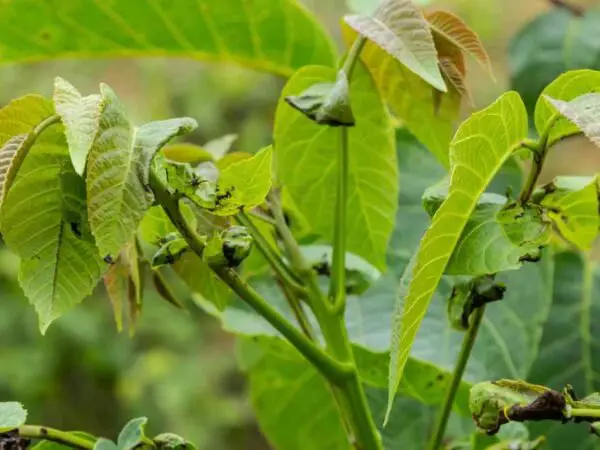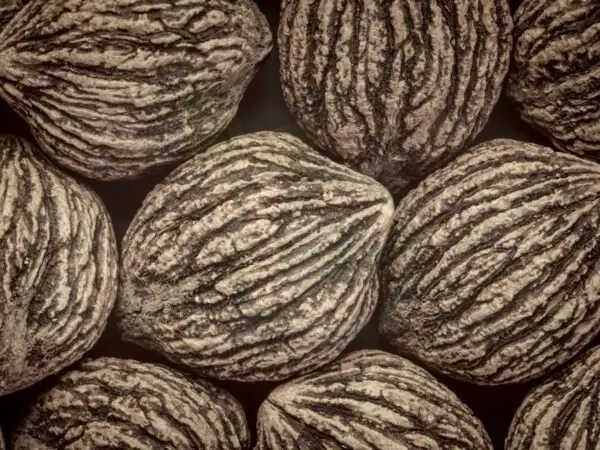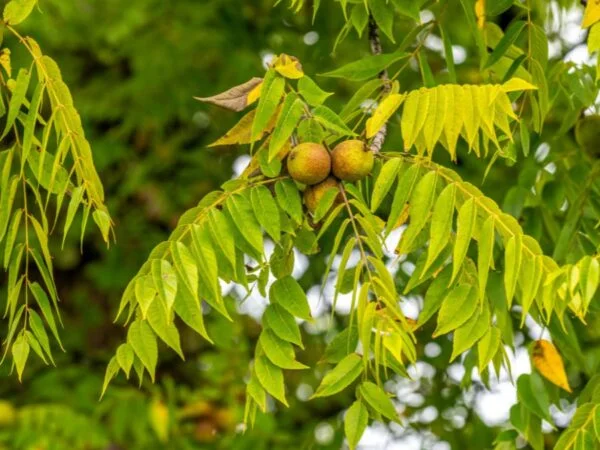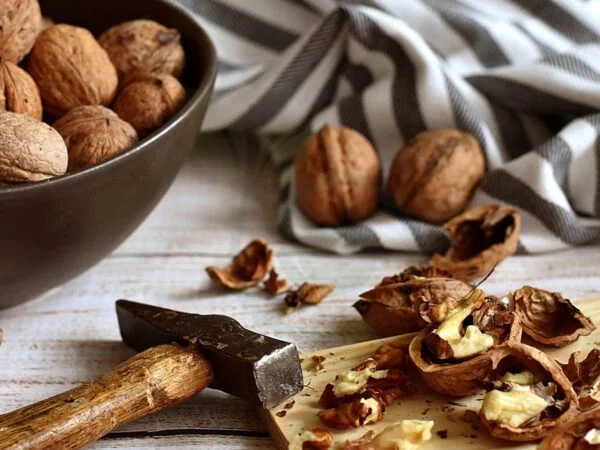Are you wondering how to identify a black walnut tree? You're in the right place! Identifying these trees can be tricky, but with the right guidance, you'll become an expert in no time.
Black walnut trees (Juglans nigra) are distinctive in several ways. They typically have compound leaves with 15 to 23 leaflets arranged opposite each other on the stem. The bark is dark and deeply furrowed, and the nuts are round, hard, and enclosed in a thick, green husk that turns black when ripe. When crushed, the nuts release a strong, distinctive odor. These features make black walnut trees relatively easy to identify in their natural habitat or in cultivated landscapes.
Ready to explore the world of black walnut trees further? Keep an eye out for more insights and tips on identifying these valuable and fascinating trees.
Key Takeaways
- Look for the Pinnate Leaves: Black walnut trees have pinnate leaves with 11 to 23 leaflets, a key feature to recognize them.
- Check for Diamond-Shaped Leaf Scars: Detailed analysis of the leaf scars can help in identifying black walnut trees, as they have distinctive diamond-shaped scars.
- Note the Dark, Furrowed Bark: Black walnut trees have dark, deeply furrowed bark that sets them apart from other tree species.
- Identify the Round, Green Fruit: The round, green fruit of black walnut trees is a crucial characteristic for identification.
- Distinguish Black Walnuts by Size and Shape: Differentiating black walnuts from other tree nuts is possible by observing their size and shape.
- Observe Tree Branching Patterns: Identifying dormant black walnut trees involves studying their branching patterns during the winter months.
Recognizing Black Walnut Trees
Distinctive Bark
Look for grayish-brown or black bark with deep grooves and diamond-shaped patterns. Notice the broad ridges with sharp or rounded edges on the bark. Identify a black walnut tree by its unique bark texture and color.
Unique Leaf Structure
Observe the large feather-compound leaves with 11–23 leaflets. Note the toothed margins and broadest below the middle leaflets. Look for yellow-green upper surfaces and paler, hairy lower surfaces on the leaflets.
Fruit Identification
Recognize ripe fruits in September–October as single or paired nuts with green husks. Identify the oily, sweet, and edible kernel of the fruit. Differentiate black walnut tree fruits from other species based on their characteristics.
Habitat Overview
Locate black walnut trees in open areas with well-drained soil. Search for these trees in the eastern United States and southern Ontario. Understand the preferred habitat conditions for black walnut tree growth.
Detailed Leaf Analysis
Leaf Arrangement
Black walnut trees display an alternate leaf arrangement, where leaves are positioned in a staggered pattern along the stem. Their compound leaves exhibit a unique layout that distinguishes them from other tree species. By noting this arrangement, you can easily identify black walnut trees.
Leaf Shape
The compound leaves of black walnut trees typically measure 1–2 feet in length and consist of several smaller leaflets. These leaflets are approximately 3–5 inches long and 1–2 inches wide, featuring toothed margins. Such distinctive leaf shapes serve as key identifiers for black walnut trees.
Color Variations
When examining black walnut tree leaves, take note of the yellow-green upper surface and the paler hue on the lower side of the leaflets. Pay attention to the tree's bark color, which tends to be grayish-brown or black with unique diamond-shaped patterns etched onto it. These color variations are crucial markers for identifying black walnut trees.
Black Walnut Bark Characteristics
Texture Features
Feel the hairy, brown to gray-brown twigs of a black walnut tree. Notice the stout, rigid texture of the twigs. Identify black walnut trees by their unique twig textures.
Color Patterns
Recognize the grayish-brown or black bark color with deep grooves. Observe the yellow-green upper surface and paler lower surface of the leaflets. Identify black walnut trees based on their distinct color patterns.
Black Walnut Fruit Insights
Outer Husk Description
When observing black walnut tree fruits, look for the green, round husk enveloping the nuts. These husks are distinct and easy to recognize. Differentiating black walnut tree husks from other species is crucial for accurate identification.
Seed Identification
Identify the oily, sweet, and edible kernel within the black walnut tree fruit. The seeds are typically found inside the green husk either as single or paired nuts. Learning how to distinguish black walnut tree seeds from those of other species is essential for proper identification.
Differentiating Black Walnuts
Black walnut trees can be distinguished from similar species like butternut and English walnut by recognizing their unique characteristics. The key differences lie in the appearance of the leaves, bark, and nuts. Butternut trees have alternate compound leaves with 11-17 leaflets, while black walnut trees have 15-23 leaflets in an alternate arrangement. English walnut trees have a more upright growth habit compared to the spreading nature of black walnut trees.
Recognizing black walnut trees involves observing the distinctive features that set them apart from other species. Black walnuts have dark, deeply furrowed bark with ridges that form diamond-shaped patterns. Their leaves are pinnately compound, meaning they consist of multiple leaflets arranged along a central stem. The nuts produced by black walnut trees are round, hard-shelled, and enclosed in a thick green husk that turns black as it matures.
Understanding the key differences between black walnut trees and related species is essential for accurate identification. While both butternut and English walnut trees belong to the Juglandaceae family like black walnuts, they exhibit noticeable variations in leaf structure, bark appearance, and nut characteristics. By paying close attention to these distinguishing features, you can confidently differentiate black walnuts from similar tree species.
Planting susceptible plants like tomatoes and potatoes near black walnut trees can lead to negative effects due to the release of juglone, a toxic substance present in all parts of the tree. Avoiding such plantings is crucial to prevent stunted growth or wilting of sensitive crops. Certain ornamental plants like azaleas and rhododendrons may also suffer when grown in close proximity to black walnut trees.
Understanding which plants are unsuitable to grow near black walnut trees is vital for maintaining a healthy garden or landscape. Some vegetables such as peppers and eggplants are sensitive to juglone toxicity and should be kept away from black walnuts. Trees like apple and birch may also experience growth inhibition when planted near black walnut trees due to the allelopathic effects of juglone on their root systems.
Learning about the potential negative effects of certain plants near black walnut trees can help you make informed decisions regarding landscaping choices. By avoiding planting susceptible species within the vicinity of black walnuts, you can mitigate issues related to juglone toxicity and ensure the optimal growth of your desired plants in the garden or orchard.
Identifying Dormant Trees
Winter Identification Tips
During the winter, use bark and branch clues to identify black walnut trees easily. Look for unique features that make black walnut trees stand out in the winter landscape. Even without leaves, you can still learn how to recognize black walnut trees.
Bark and Branch Clues
To distinguish black walnut trees, focus on their distinctive bark and branch characteristics. Pay attention to specific clues on the bark and branches that aid in tree identification. By understanding these features, you can effectively differentiate black walnut trees from other species.
Propagation from Seeds
Seed Collection
Collecting seeds from black walnut trees is a crucial step in propagation. Harvest the seeds during the fall season when they are mature. Look for ripe fruits that have fallen to the ground.
Ensure the collected seeds are free from mold or damage. Store them in a cool, dry place until you are ready to start the germination process. Proper seed collection is essential for successful propagation.
Germination Process
Understanding the germination process of black walnut tree seeds is vital for successful propagation. These seeds have a hard shell that needs to be softened before planting. Soak the seeds in water for 24 hours to break dormancy.
Plant the soaked seeds in a mixture of sand and peat moss. Keep the soil moist but not waterlogged to encourage germination. Place the planting container in a warm location with indirect sunlight.
Benefits for Wildlife
Nutritional Value
Black walnut tree fruits provide nutritional benefits for wildlife, offering a rich source of sustenance. The oily and sweet kernel within the fruit is highly prized by various animals in the ecosystem. Consuming black walnut tree products can contribute to the health advantages for wildlife populations.
Habitat Importance
Black walnut tree habitats play a crucial role in maintaining biological diversity within ecosystems. These habitats are essential for various animals that rely on them for shelter, food, and nesting sites. Preserving black walnut tree habitats is vital for supporting ecology projects and ensuring the well-being of local wildlife populations.
Growth and Care Tips
Ideal Conditions
Black walnut trees thrive in deep, well-drained soils with a pH level between 6 and 7. They prefer areas with full sun exposure for optimal growth. The trees also require adequate spacing to prevent competition for resources.
Creating ideal conditions involves ensuring the soil is rich in nutrients, especially phosphorus and potassium. Proper moisture levels are crucial, avoiding both waterlogged and overly dry conditions. Providing regular pruning helps maintain tree health and shape.
Common Challenges
One common challenge when growing black walnut trees is dealing with competition from weeds, which can hinder growth. These trees are susceptible to pests like caterpillars that can damage foliage. Implementing effective pest control measures is essential.
Another challenge is the presence of diseases such as thousand cankers disease, which can be fatal to black walnut trees if not addressed promptly. Ensuring proper air circulation around the tree canopy can help prevent disease development. Regularly inspecting the tree for signs of disease is crucial.
Closing Thoughts
After delving into the various characteristics of black walnut trees, you are now equipped with the knowledge to confidently identify these majestic trees in the wild. By recognizing key features such as leaf structure, bark appearance, and fruit properties, you can differentiate black walnut trees from other species with ease. Understanding their growth patterns, propagation methods, and benefits for wildlife further enriches your appreciation for these valuable trees.
Take your newfound expertise on black walnut tree identification and share it with fellow nature enthusiasts. Encourage others to learn about these remarkable trees and their importance in the ecosystem. By spreading awareness and knowledge, you contribute to the conservation efforts aimed at preserving these iconic species for future generations.
Frequently Asked Questions
How can I recognize a Black Walnut tree?
To recognize a Black Walnut tree, look for these key features:
- Pinnate leaves with 15-23 leaflets
- Rough, dark-colored bark
- Round to oblong green fruits with a hard shell
- Can grow up to 100 feet tall
What are the benefits of identifying a Black Walnut tree?
Identifying a Black Walnut tree can be beneficial for:
- Harvesting the nuts for consumption or sale
- Using the wood for furniture and crafts
- Understanding its growth requirements for landscaping
How do I differentiate between Black Walnuts and other walnut trees?
Differentiate Black Walnuts by noting:
- Pinnate leaves with many leaflets
- Dark, rough bark
- Round to oblong green fruits with a hard, ridged shell
- Strong aroma when the fruit is crushed
What are some tips for identifying dormant Black Walnut trees?
Identify dormant Black Walnut trees by examining:
- The overall structure of the tree without leaves
- Bark characteristics such as color and texture
- Any remaining fruits or nuts on the branches from the previous season
Can Black Walnut trees be propagated from seeds?
Yes, Black Walnut trees can be propagated from seeds. Here's how:
- Collect ripe walnuts in the fall.
- Remove husks and dry seeds for planting.
- Plant seeds in well-draining soil.
- Provide consistent moisture until germination occurs.
How do Black Walnut trees benefit wildlife?
Black Walnut trees benefit wildlife by:
- Providing food in the form of nuts for various animals like squirrels and birds.
- Offering shelter and nesting sites for birds and small mammals.
- Contributing to biodiversity in ecosystems where they grow.
Image Source: Paid image from CANVA

